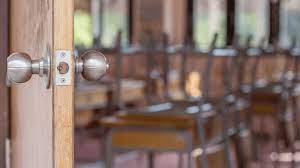Introduction
The traditional image of a teacher shutting their classroom door, effectively isolating themselves and their students from the outside world, is rapidly becoming an outdated concept. This “shut the door and teach” principle once defined the teaching process as a solitary act, an almost sacred exchange of knowledge between teacher and students. However, with the advent of new technology, together with evolving educational methods and a growing emphasis on collaboration, this old principle has been replaced by more holistic and open learning environments.
1. The Shift From Traditional Teaching Methods
Traditional teaching methods, grounded in rote memorization and a rigid approach to lesson structure, have been challenged by progressive teaching techniques that focus on student-centered learning. The introduction of concepts such as flipped classrooms, project-based learning, and collaborative workgroups has transformed education into an interactive experience where teachers now serve as facilitators, offering guidance rather than dictating material to be absorbed.
2. Technological Advancements
Technology has revolutionized how classrooms are run and greatly increased our interconnectedness. Tools like Google Classroom, Zoom meetings, and educational apps have created an environment where students actively engage with peers and teachers alike through real-time communication channels while accessing unlimited resources online. This digital integration promotes a sense of community in which feedback can be given quickly and obstacles to learning can be addressed by multiple stakeholders.
3. Inclusivity And Diversity In The Classroom
In today’s diverse classrooms, educators must strive to address individual needs while maintaining inclusivity. Teachers can no longer afford to adopt a one-size-fits-all approach; they must tailor their methods to suit various learning styles, abilities, and cultural backgrounds. This push for inclusivity necessitates going beyond merely conveying information; it challenges teachers to create interactive lessons that cater to every student’s needs while increasing engagement across different segments of the classroom population.
4. Collaboration With Colleagues
Professional collaboration amongst educators has become increasingly important in the modern era. Teachers must be able to share their experiences and insights, exchanging successful classroom strategies, discussing curriculum changes, and working together on initiatives to improve the overall educational experience. This teamwork breaks down the once exclusive nature of the teacher-student relationship and encourages a continuous flow of shared knowledge.
5. Accountability And Evaluation
The era of easily “shutting the door and teaching” has been replaced by a new sense of accountability for teachers. Educators are now evaluated more rigorously through performance-based assessments, student feedback, and data-driven outcomes. This increased scrutiny introduces new challenges while also promoting transparency and fostering continuous improvement in teaching practices.
Conclusion
While there was once a time when teachers could simply “shut the door and teach,” life in modern-day education is far more complex, demanding a level of adaptability, collaboration, technological proficiency, and inclusivity that few could have predicted in years past. Although this shift carries many challenges, it also presents endless opportunities for educators to evolve alongside their students and actively participate in shaping the future of learning.


